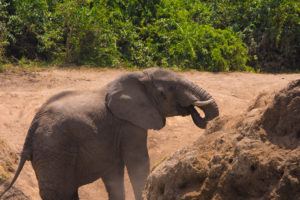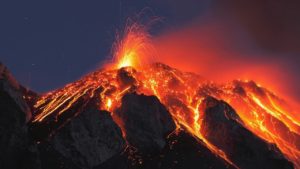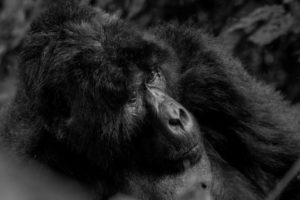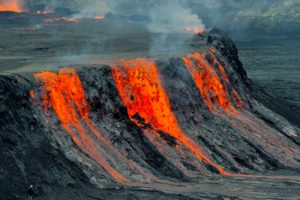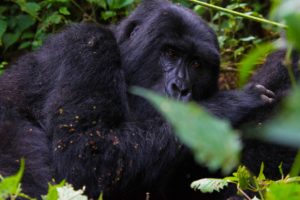With 2,344,858 square kilometers of total land area, the Democratic Republic of Congo is 11th largest country in the whole World, second largest in Africa (after Algeria) and the largest in Sub-Saharan African, making it equivalent to the size of Western Europe. This country is found in the Central region of African Continent and boasts about 40 kilometers coastline on Atlantic Ocean, which makes it literally landlocked. With a total population of over 86,790,570 people, the Democratic Republic of Congo is the fourth most populous country in the Continent (behind Egypt, Ethiopia and Nigeria), and its Capital Kinshasa has the highest population in addition to being the largest City in the Central part of Africa.
The Democratic Republic of Congo was a Belgian Colony until 1960 when it finally gained Independence as the “Republic of Zaire”. However, its name was eventually changed between 1971 and 1997 under the leadership of Gen. Mobutu Sese Seko in an attempt to give the country a more “African” name.
The Congo River mostly drains in the Democratic Republic of Congo and is the second longest River in the African Continent in addition to being the deepest ever recorded River in the world. This country is one of the richest and undoubtedly richly endowed places on Earth with a variety of outstanding natural resources in form of gold, diamonds and when you talk of tourism, no country in Africa can offer even half of what Congo offers. Some of the largest remaining Tropical rainforests of Africa are found in this country. Additionally, a wide range of extraordinary animals are found here and these include the Lesula, Bonobo (pygmy chimpanzees), Okapi, the Eastern lowland gorillas (largest gorilla sub-species), Congo peafowl and many others. Even with these outstanding attractions, the country’s tourism still remains untapped and visitors looking for authentic experiences undertake Congo safaris.
Why Visit Congo?
Travellers looking for authentic and more secluded safari experiences book for Congo Safaris. With a long list of interesting things to see and do in this country, you will definitely be spoilt for choice. However, Congo safaris are incomplete without visits to;
Virunga National Park
Nestled in the Eastern part of the country, Democratic Republic of Congo is one of the most popular and treasured safari destinations in Africa, known for sheltering the endangered mountain gorillas. This Park came into existence in 1925 (making it one of the oldest Parks in Africa) and was designated a UNESCO World Heritage Site in 1979. Visitors to Virunga National Park can trek mountain gorillas (with 8 habituated groups open for trekking), undertake chimpanzee treks, enjoy guided forest walks with opportunities of encountering Okapi, forest elephants, bushbucks and many others. This Park is home to the famous active Volcanoes of Africa-Mount Nyiragongo and Mount Nyamuragira.
Kahuzi-Biega National Park
Kahuzi-Biega National Park also in the Eastern part of Democratic Republic of Congo was named after two extinct Volcanoes-Mount Kahuzi and Mount Biega sprawling from the Congo River Basin to Bukavu area. This UNESCO World Heritage Site was first established as a National Park in 1970 to protect the extraordinary Eastern Lowland Gorillas that were threatened by poaching, illegal bush meat trade and habitat encroachment. Besides the Eastern lowland gorillas, travellers have chances of spotting elephants, chimpanzees, serval cats, genets as well as over 375 bird species.
Salonga National Park
Situated along the Congo River Basin and extending for over 33,350 square kilometers, Salonga National Park protects the largest Forest Reserve in not only Democratic Republic of Congo but the entire African Continent. It is within this UNESCO World Heritage Site that the slender snouted crocodiles, long-tailed pangolins, Congo peafowl, Bonobo and okapi will be spotted alongside other popular wildlife species especially forest elephants, buffaloes and many others.
Kinshasa City
Kinshasa is the largest and Capital City of the Democratic Republic of Congo, established by Sir Henry Morton Stanley during the 19th Century. Visitors to this City are treated to City excursions, boat ride of Congo River, culinary tours and many other exciting things.
Lola ya Bonobo
Popular for being the World’s only Sanctuary for Orphaned Bonobos, this magnificent tourist site offers a second chance to one of the rarest Great Apes that were completely neglected and isolated until the 20th Century. This Sanctuary sits on an area of 30 hectares marked by rainforest and is also a perfect place for nature volunteers.
Okapi Wildlife Reserve
Okapi Wildlife Reserve was established in 1992 to protect the Okapi in addition to protecting unique species of flora, and became a UNESCO World Heritage Site in 1996. It is popularly known for offering shelter to the rare and beautiful endangered Okapi and covers about one-fifth of the secluded Ituri Forest. This Reserve is set within the north-eastern side of the country.
Lake Kivu
The spectacular Lake Kivu is situated between the Rwanda-Democratic Republic of Congo Border and is so far the 6th largest Lake in the African Continent with a total Surface Area of 2700 square kilometers. At the backdrop of this beautiful Lake are steep mountains and deep green waters.
Other outstanding attractions worth visiting in the Democratic Republic of Congo are Kundelungu National Park, Upemba National Park, Bukavu Town, the magnificent Zongo and Boyoma waterfalls, Lomami National Park, the City of Kisangani, Senkwekwe Mountain Gorilla Orphanage, Garamba National Park, Mangroves National Park, Lwiro Research and Rehabilitation Center, Maiko National Park and many others.
When is the best time to visit Congo?
The Democratic Republic of Congo is always ready to receive visitors all year round but if you are made to choose the best time to explore the country’s beauty, it is the traditional dry season from May to September and January/February when rainfall levels are lower and temperatures slightly higher.
However, given the country’s enormous size, altitude and effects of forest canopies, it sometimes becomes challenging to predict weather patterns. Besides, the best time to visit also depends on the destination you are planning to visit as well as the activities you plan to undertake. Gorilla trekking, mountain climbing and forest walks are perfect in the dry seasons.
Estimated cost of Congo Safari.
The Cost of your Congo safari depends on the activities chosen, number of days you plan to undertake the trip, the chosen accommodation option and transport means to be used. However, it should be noted that the Democratic Republic of Congo is one of the most affordable safari destinations in Africa, even for the most costly activities such as gorilla treks.
For instance, a 3-day Congo Gorilla Safari starting from Kigali (Rwanda) can cost even as low as $1200 per person and can go as high as $2000 per person. This cost is even lower if you are undertaking a wildlife safari in Maiko or Garamba National Park (between $500 and $700 per person per day) hence the more days and number of activities you take, the more money you will spend.
Wildlife in D.R. Congo.
The Democratic Republic of Congo is home to nine National Parks and about eleven Game Reserves, with each offering outstanding features in form of spectacular sceneries, wide array of wildlife and plethora of bird species. Surprisingly, this country is regarded as one of the 17 Megadiverse countries in the World. Its savannah, rainforests, wetlands and water bodies shelter a number of endemic species that include Bonobo (pygmy chimpanzees), Lesula, Congo peafowl, the Eastern Lowland Gorillas, Upemba Lechwe and many others.
5 of the country’s National Parks/Game Reserves (Okapi Wildlife Reserve, Salonga, Virunga, Kahuzi-Biega and Garamba National Parks) have been categorized as UNESCO Word Heritage Sites.
Other interesting wildlife species that you should expect in the Democratic Republic of Congo are African softshell turtles, serval cats, Aardvarks, Hippos, Honey badger, Topis, bushbucks, waterbucks, Bohor reedbucks, African forest elephants, warthogs, African civets, sitatunga, common elands, Bongo, blue duikers, Kobs, Grant’s zebras, African tree toads, Hartebeests, African leopards, Cape hyrax, Red River hogs, spotted hyenas, sable antelopes, African golden cats, Patas monkeys, Angolan colobus monkeys, De Brazza’s monkeys, greater kudu, Blue monkeys, common duikers, African buffaloes, to mention but a few. Reptiles such as Black mamba, Green bush vipers, African rock pythons, Green mamba, Black-necked spitting cobras and many others should be expected in Congo.
Is Congo safe for tourists?
Congo is safe for tourists, although cases of terrorism attacks, armed robberies, mugging, assault and petty theft can’t be totally ruled out in the country because of political reasons and existing climate of impunity. Although there is no recently recorded cases of tourist attacks, it is better to be safe than sorry hence important to follow some basic safety guidelines.
These guidelines include; staying within the booked Hotel, dressing decently for female travellers, avoid flaunting valuables such as cash and jewelry, avoid travelling after dark because criminals usually place roadblocks and pose as police or military to rob unsuspecting visitors, leaving valuables at home or Hotel when touring public places and always respecting religious and cultural norms. Given the Covid-19 pandemic, you should make sure that you are fully vaccinated before taking a safari to Democratic Republic of Congo. Make sure that you are fully prepared with face masks, hand sanitizer and maintaining a social distance when in public places.
Vaccination requirements for D.R. Congo.
Travellers have to make sure that they are up-to-date on all routine vaccinations prior to undertaking Congo safaris, especially yellow fever vaccination and now for Covid-19. Additionally, vaccination for Typhoid, Hepatitis A and B, Measles, Cholera and Tetanus can also be considered although are not mandatory.
Packing for a D.R. Congo Safari.
Packing can sometimes be the bane of your Congo Safari and to make it memorable, you have compiled the items to include on your perfect packing list. Make sure that you have a valid passport, visa (for citizens from countries that are not exempt), water bottle, sandal or flip flops for relaxing at the Lodge/Hotel, Good camera (plus the charger, extra batteries and enough space), underwear, cotton socks, gardening gloves, sunglasses, first aid kit (with bandages, sunscreen, liniment, painkillers, anti-malarial tablets, tweezers and many others), clothing (depend on the tourist activities to be undertaken), waterproof rain jacket, comfortable walking shores/hiking boots, cash (preferably local currency for tipping and shopping), sunglasses, wide brim hat, toiletries (hair brush, lip balm, wet wipes, nail clippers, deodorant, toothbrush, shampoo, hair conditioner, moisturizer, shaver, toothpaste, body wash and many others), insect repellant, faced mask, Mobile phone plus its charger and many others.
Congo Visa requirements and fees.
Besides a valid passport and yellow fever inoculation certificate, a visa is another requirement when entering the Democratic Republic of Congo. All Citizens of United States of America are required to present a valid visa when accessing this magnificent country and have to be applied then submitted at the Embassies of DRC in country of origin before the departure date.
There are also different types of Congo Visas that include the Tourist visa that is valid for 90 days and permits multiple entries for Non-United States Citizens while US Citizens planning trips to Uganda are provided Visa of 6 months for multiple entries.
The Business Visa is valid for only 30 days multiple entries for non-US Citizens while US Citizens are granted validity for 160 days multiple entries.
Travellers can also apply for the Diplomatic Visa (for Diplomatic passport holders) and are valid for 12 months for multiple entries. Requirements to apply for Congo visas are two duly filled application forms, two passport color photographs, valid passport and an invitation letter or Hotel booking for tourists, a copy of your US green Card or US/Mexican Visa (for non-Citizens), business letter for applicants of business visas, copy of your travel itinerary or airline tickets. Besides United States and Mexico, other countries required to present Visas are Romania, Mali, Solomon Islands, Saint Lucia, Niger, United Kingdom, Sierra Leone, Poland, Papua New Guinea, Morocco, Netherlands, Malaysia, Germany, and Fiji among others.
Citizens of other countries are granted visa-free access into the Democratic Republic of Congo and these include Haiti, Benin, Mauritius, Burundi, Uganda, Central African Republic, Dominica and Gambia among others. Citizens of Ghana, Bangladesh, Ethiopia, Burkina Faso, Iran and Comoros among others are issued visa on arrival.
Tipping on Congo Safari and currency used.
From your safari driver, to the waitress / waiter at restaurants to porters that offer support during mountain climbing or gorilla treks, it is courteous to tip for a good service offered.
The recommended tipping amount is $8 to $20 per person but remember that it is also not forced or mandatory. Although there is no strictness when it comes to tipping, the local currency is preferable because some of the safari destinations are remote without foreign exchange points.

